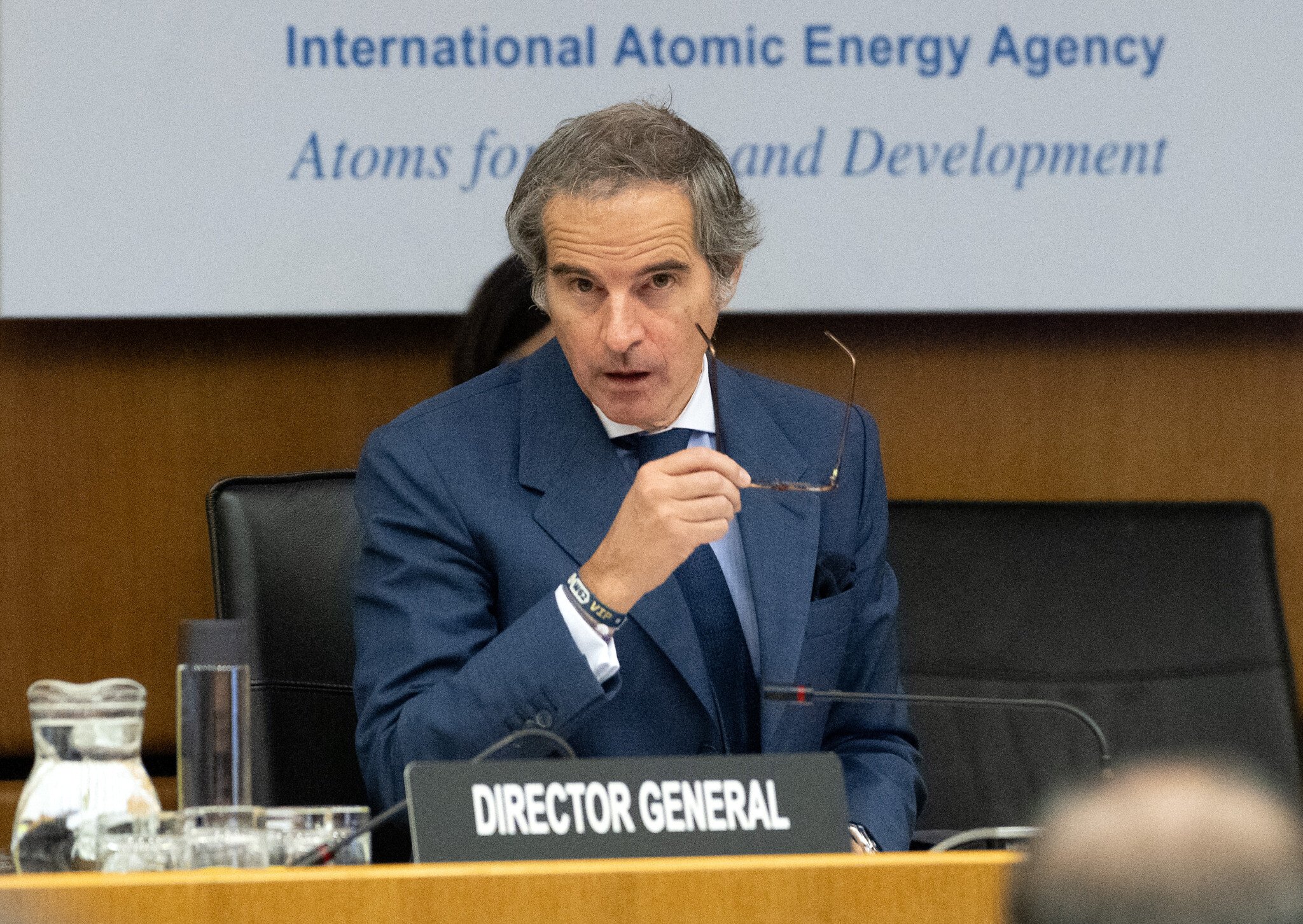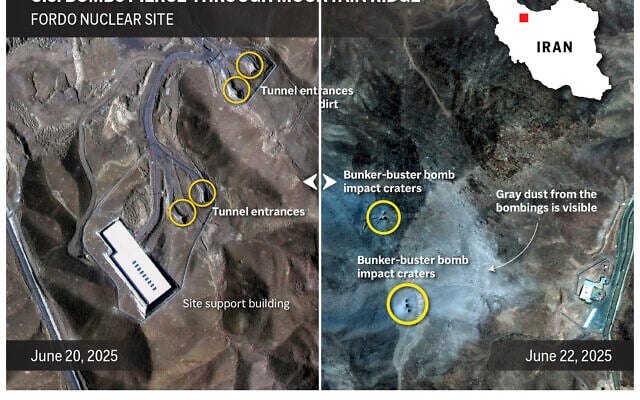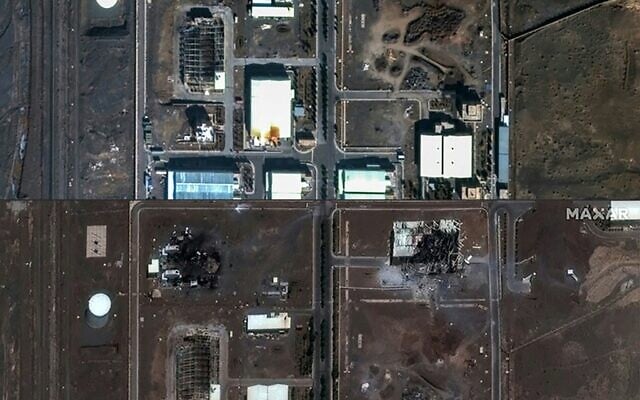



WASHINGTON DC — UN nuclear watchdog chief Rafael Grossi says Iran likely will be able to begin to produce enriched uranium “in a matter of months,” despite damage to several nuclear facilities from US and Israeli attacks, CBS News said Saturday.
Israel launched a bombing campaign on Iranian nuclear and military sites on June 13, saying it was aimed at keeping Iran from developing a nuclear weapon. Then, last Sunday, the United States subsequently bombed three key facilities used for Tehran’s atomic program.
Iranian Foreign Minister Abbas Araghchi has said that the extent of the damage to the nuclear sites is “serious,” but the details are unknown, while US President Donald Trump insisted Iran’s nuclear program had been set back “decades.”
In Israel, IDF spokesman Brig. Gen. Effi Defrin said Israel thinks Iran’s nuclear program had been set back years by the war, but that it was “still too early” to tell.
But Grossi, the director general of the International Atomic Energy Agency, said “some is still standing.”
“They can have, you know, in a matter of months, I would say, a few cascades of centrifuges spinning and producing enriched uranium, or less than that,” Grossi said Friday, according to a transcript of the interview released Saturday.
Grossi’s remarks appeared to concur with a preliminary intelligence report from the Pentagon last week, which assessed that the US strikes at the key nuclear facilities at Natanz, Fordo, and Isfahan, did not destroy the sites’ underground components and left Iran’s stockpile of enriched uranium largely intact.
According to that report — whose findings were leaked to the press on Tuesday and which was rejected by the White House — the Islamic Republic is less than six months away from obtaining a nuclear weapon should it decide to do so, up from only some three months prior to the US attack.
Another key question is whether Iran was able to relocate some or all of its estimated 408.6-kilo (900-pound) stockpile of highly enriched uranium before the attacks.
The uranium in question is enriched to 60 percent — above levels for civilian usage but still below weapons grade. That material, if further refined, would theoretically be sufficient to produce more than nine nuclear bombs.
Grossi admitted to CBS: “We don’t know where this material could be.”
“So some could have been destroyed as part of the attack, but some could have been moved. So there has to be, at some point, a clarification,” he said in the interview.
For now, Iranian lawmakers voted to suspend cooperation with the IAEA and Tehran rejected Grossi’s request for a visit to the damaged sites, especially Fordo, the main uranium enrichment facility.
“We need to be in a position to ascertain, to confirm what is there, and where is it and what happened,” Grossi said.
In a separate interview with Fox News’s “Sunday Morning Futures” program, Trump said he did not think the stockpile had been moved.
“It’s a very hard thing to do plus we didn’t give much notice,” he said, according to excerpts of the interview. “They didn’t move anything.”
US Secretary of State Marco Rubio on Saturday underscored Washington’s support for “the IAEA’s critical verification and monitoring efforts in Iran,” commending Grossi and his agency for their “dedication and professionalism.”
The full Grossi interview will air on “Face the Nation with Margaret Brennan” on Sunday.
Israel and Iran entered into open conflict on June 13 when Israel launched airstrikes targeting Iran’s top military leaders, nuclear scientists, uranium enrichment sites and ballistic missile program. Israel said the campaign was necessary to prevent the Islamic Republic from realizing its declared plan to destroy the Jewish state. On June 22, the US struck key Iranian nuclear facilities.
Iran retaliated to Israel’s attacks by launching over 550 ballistic missiles and around 1,000 drones at Israel. Iran’s missile attacks killed 28 people and wounded thousands in Israel, according to health officials and hospitals. Missiles hit apartment buildings, a university, and a hospital, causing heavy damage. Iran also fired at a US base in Qatar after the American strikes.


